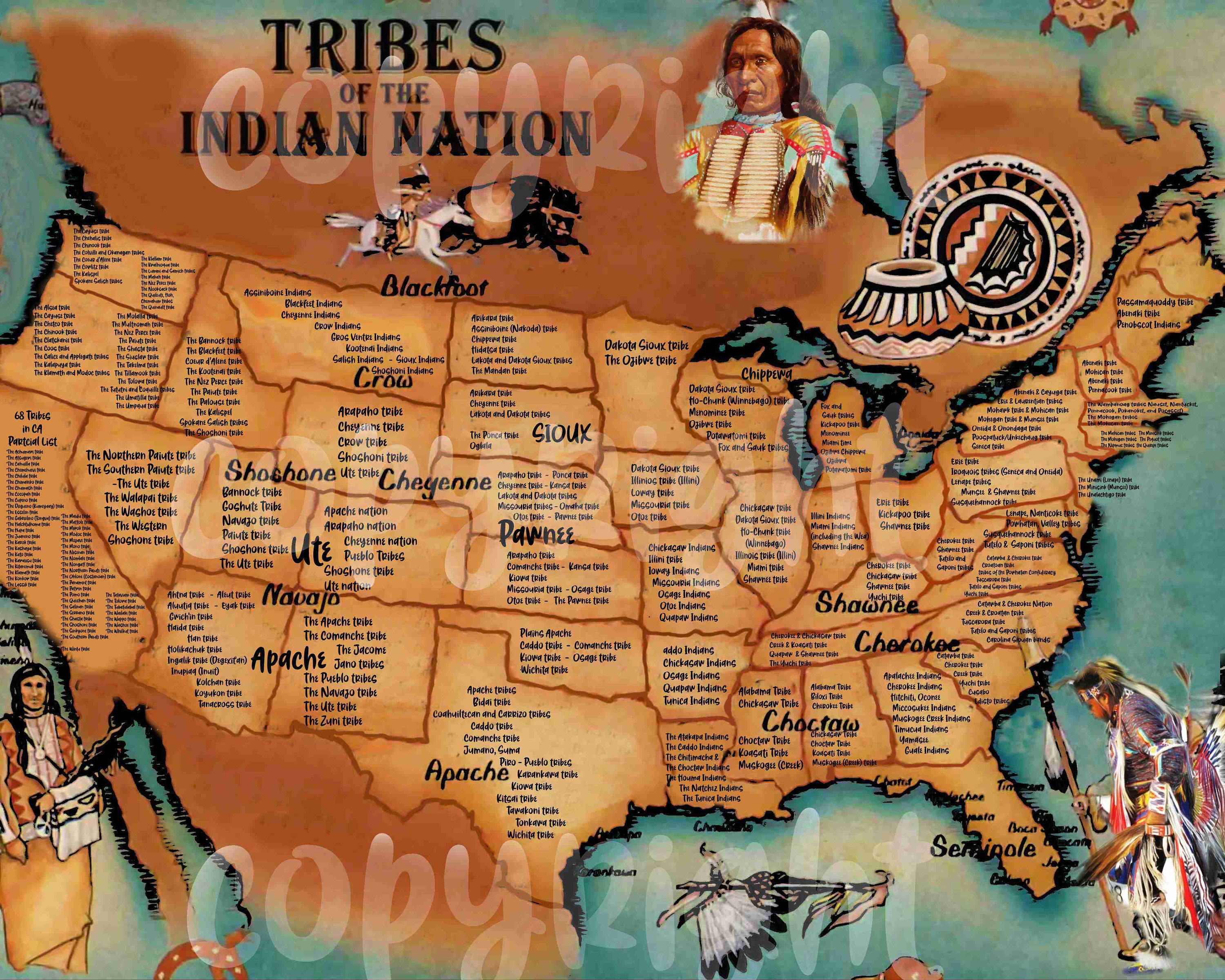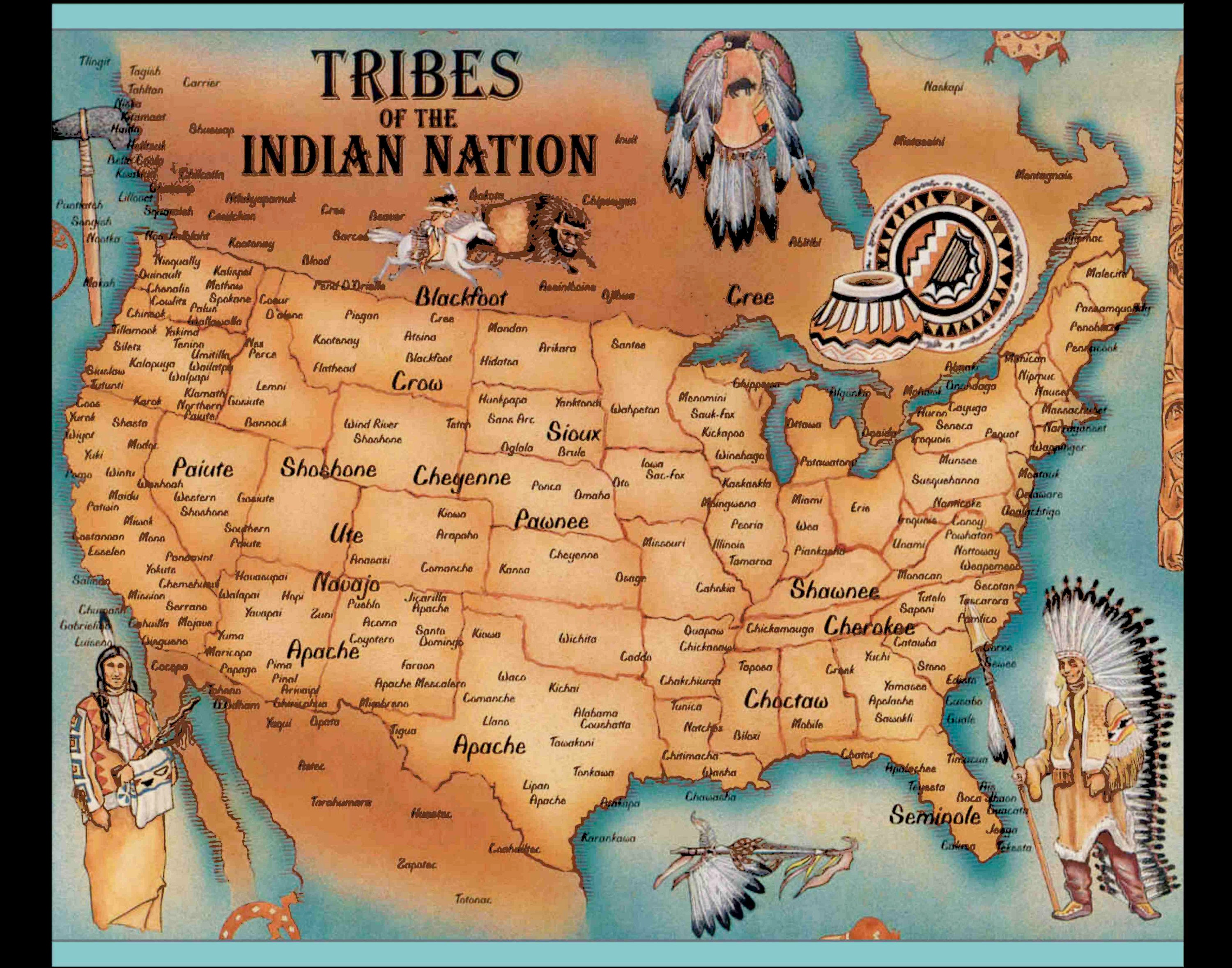
Unveiling the Labyrinth: A Traveler’s Guide to Native American Intertribal Relations
To truly understand the vast and vibrant tapestry of Native American history and identity, we must discard the monolithic image often presented and embrace the intricate, dynamic web of intertribal relations that defined the continent for millennia. Imagine not a static map of isolated territories, but a living, breathing atlas where lines of alliance, conflict, trade, and cultural exchange constantly shifted and intertwined. This "Map of Native American Intertribal Relations" is not just a geographical representation; it is a historical narrative, a testament to complex diplomacy, fierce independence, and enduring resilience. For any traveler or history enthusiast seeking a deeper appreciation of Indigenous cultures, comprehending this intricate network is paramount.
Long before European arrival, North America was a continent teeming with thousands of distinct nations, each with its own language, governance, spiritual beliefs, and economic systems. The idea of a singular "Native American identity" is a modern construct, often obscuring the profound diversity and the sophisticated political landscapes that flourished. These were not isolated communities; they were participants in vast, interconnected systems of interaction.
The Pre-Colonial Tapestry: A World of Sophisticated Interaction

The pre-colonial era (prior to 1492) witnessed the flourishing of highly organized societies engaged in extensive intertribal relations. Far from being primitive, these societies demonstrated remarkable ingenuity in establishing and maintaining complex networks.
Vast Trade Networks: Imagine superhighways of commerce crisscrossing the continent. Materials like obsidian from the West Coast, copper from the Great Lakes, conch shells from the Gulf of Mexico, and turquoise from the Southwest were traded over vast distances, indicating established routes and diplomatic ties. The powerful Mississippian culture, centered at sites like Cahokia, served as a major trade hub, connecting disparate groups through a network that stretched from the Great Lakes to the Gulf. These exchanges weren’t just about goods; they facilitated the sharing of ideas, technologies, and cultural practices, diffusing agricultural techniques, artistic styles, and ceremonial knowledge across diverse populations.
Powerful Alliances and Confederacies: Many Native nations formed sophisticated political entities that transcended individual tribal boundaries. The Haudenosaunee (Iroquois) Confederacy, a union of initially five (later six) nations in the Northeast, is a prime example. Formed centuries before European contact, its "Great Law of Peace" established a democratic, consensus-based governance structure that influenced even the framers of the U.S. Constitution. This confederacy was not merely defensive; it was a powerful political and military force, negotiating with and often dominating neighboring tribes and later, European powers. Similarly, the Creek Confederacy (Muscogee) in the Southeast united numerous towns and groups, providing a framework for mutual defense, trade, and cultural cohesion. The Anishinaabe Three Fires Confederacy (Ojibwe, Odawa, and Potawatomi) in the Great Lakes region also exemplified a powerful alliance based on shared cultural heritage and strategic interests.
Dynamic Conflicts and Diplomacy: It is also crucial to acknowledge that intertribal relations included conflict. Like any human societies, Native nations engaged in territorial disputes, resource competition, and cycles of revenge. These conflicts, however, were often governed by specific protocols and rituals, and were balanced by sophisticated diplomatic practices, including formal treaties, gift-giving ceremonies, and the exchange of hostages or adopted individuals to solidify peace. Understanding this ebb and flow of alliance and conflict reveals a highly nuanced political landscape, far removed from simplistic narratives of peaceful coexistence or constant warfare.

The Colonial Interruption: Shifting Sands of Power
The arrival of Europeans irrevocably altered this delicate balance. The introduction of new diseases, technologies (especially firearms), and economic systems (primarily the fur trade) acted as powerful catalysts, forcing Native nations to re-evaluate and often reconfigure their intertribal relationships.
Disease and Demographic Collapse: The most immediate and devastating impact was the introduction of Old World diseases like smallpox and measles. Lacking immunity, Native populations experienced catastrophic mortality rates, sometimes reaching 90% in affected areas. This demographic collapse drastically weakened many nations, disrupting established power structures, trade networks, and social cohesion, making them more vulnerable to European encroachment and further shifting the balance of power among surviving groups.
Exploitation of Existing Rivalries: European colonial powers—the Spanish, French, English, and Dutch—quickly learned to exploit existing intertribal rivalries for their own strategic advantage. Native nations, in turn, often allied with one European power against another, not out of blind loyalty, but as a strategic maneuver to gain access to European goods (especially guns) or to achieve an upper hand against long-standing Native rivals. For example, the Huron-Wendat allied with the French against their traditional enemies, the Haudenosaunee, who in turn allied with the Dutch and later the British. The Powhatan Confederacy initially sought to manage the English colonists through a mix of diplomacy and resistance, but ultimately succumbed to the pressure. These alliances were fluid and pragmatic, driven by survival and the desire to maintain autonomy in a rapidly changing world.

Forced Migration and Reshaping Territories: As European settlements expanded, many Native nations were displaced from their ancestral lands. These forced migrations often pushed groups into territories already occupied by other tribes, leading to new conflicts and further disrupting established intertribal dynamics. The pressure of colonial expansion created a domino effect, with tribes being pushed westward, south, or north, often into direct conflict with new neighbors.
The American Frontier: Resistance and Reshaping
The formation of the United States and its westward expansion brought a new, relentless pressure on Native nations. The concept of "Manifest Destiny" fueled policies of land acquisition and forced removal, once again reshaping the intertribal map.
Pan-Indian Resistance Movements: In response to the existential threat posed by the burgeoning American republic, some Native leaders attempted to forge broader, pan-Indian alliances. Tecumseh, a Shawnee leader, in the early 19th century, spearheaded a powerful confederacy of tribes from the Great Lakes to the Southeast, advocating for a unified Native front against American expansion. His vision of a shared Indigenous identity and collective resistance represented a remarkable attempt to transcend historical tribal divisions in the face of a common enemy, though ultimately unsuccessful due to internal divisions and American military might.
Reservations and Forced Coexistence: The reservation system, established in the 19th century, profoundly altered intertribal relations. Often, multiple tribes, sometimes historical rivals or even culturally disparate groups, were forcibly settled onto the same reservation lands. This artificial proximity created new social dynamics, fostering both tensions and, in some cases, new forms of intermarriage and cultural exchange. The forced cessation of traditional trade routes, hunting grounds, and ceremonial sites further eroded the pre-existing intertribal structures that had defined relations for centuries.
20th Century and Beyond: Reclaiming Identity and Forging New Paths

The 20th and 21st centuries have seen a powerful resurgence of Native American identity and sovereignty, once again influencing intertribal relations.
Self-Determination and Tribal Sovereignty: Following decades of assimilation policies, the mid-20th century marked a shift towards self-determination. Native nations began to assert their inherent sovereignty, leading to a revitalization of tribal governments, legal battles for land rights, and efforts to preserve languages and cultural practices. This era fostered new forms of intertribal collaboration, as nations united to advocate for common interests in Washington D.C. and at international forums.
Modern Intertribal Organizations: Today, organizations like the National Congress of American Indians (NCAI), the National Indian Gaming Association (NIGA), and numerous regional intertribal councils serve as vital platforms for collective advocacy, resource sharing, and cultural exchange. These bodies demonstrate a contemporary "map" of cooperation, where tribes leverage their collective strength to address issues ranging from environmental protection and economic development to healthcare and education. The annual Gathering of Nations powwow in Albuquerque, New Mexico, is a powerful visual representation of this modern intertribalism, bringing together thousands of people from hundreds of tribes to celebrate shared heritage and diversity.
Cultural Revitalization and Shared Identity: While distinct tribal identities remain paramount, there is also a growing recognition of a broader Indigenous identity, especially in the face of ongoing challenges. Intertribal sharing of cultural practices, artistic expressions, and knowledge systems contributes to a vibrant and evolving Native American cultural landscape. Many traditional ceremonies, once practiced in isolation, are now shared and adapted, fostering a renewed sense of community across tribal lines.
Identity and Legacy: A Living History
The "Map of Native American Intertribal Relations" is not a dusty relic; it is a living document, constantly being drawn and redrawn by the actions and decisions of contemporary Native nations. It is a testament to extraordinary resilience, adaptability, and the enduring power of culture and community.
For travelers and history enthusiasts, understanding this complex history is not just an academic exercise; it enriches every visit to a historical site, every interaction with an Indigenous community, and every piece of art or cultural expression encountered. It challenges stereotypes, revealing sophisticated political structures, dynamic cultural exchanges, and a history far richer and more nuanced than often portrayed.
When you stand on the grounds of an ancient mound city, consider the distant lands from which its goods arrived. When you learn about a specific tribe, consider its historical allies and adversaries. When you visit a modern reservation, recognize the layers of history that brought its diverse residents together. By doing so, you move beyond a superficial understanding and begin to grasp the profound depth and continuing relevance of Native American identity—an identity forged and perpetually shaped by millennia of intricate intertribal relations. This is not just history; it is the very foundation of Indigenous existence, a legacy that continues to inform, inspire, and shape the present.
